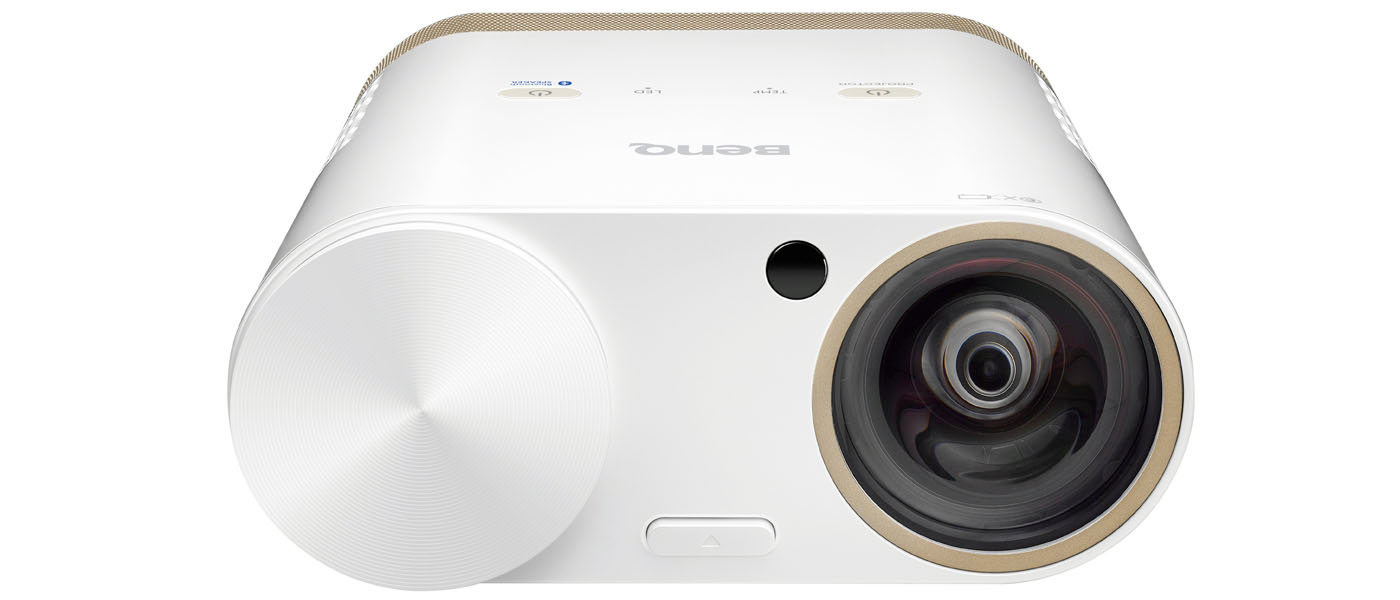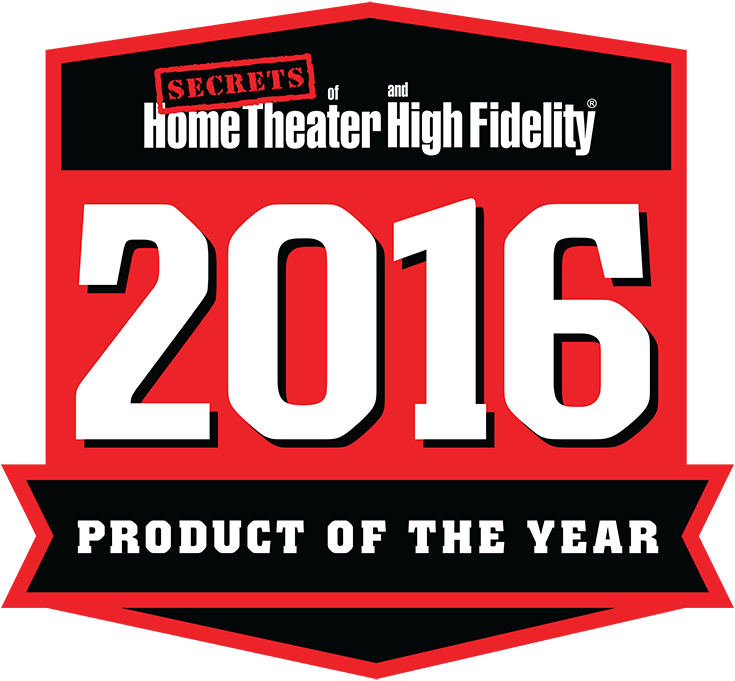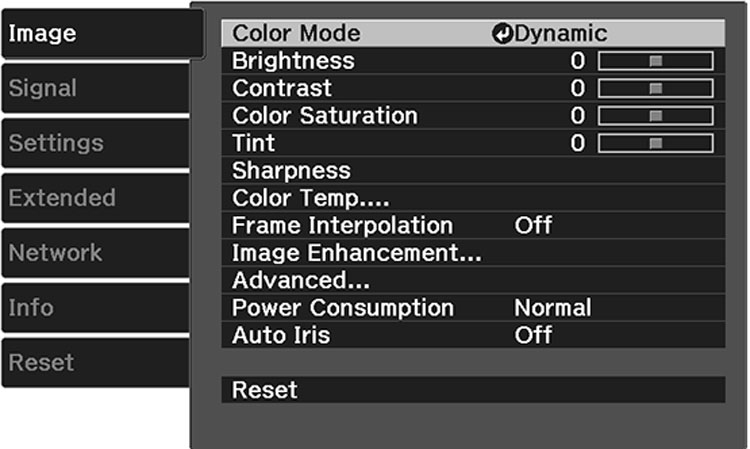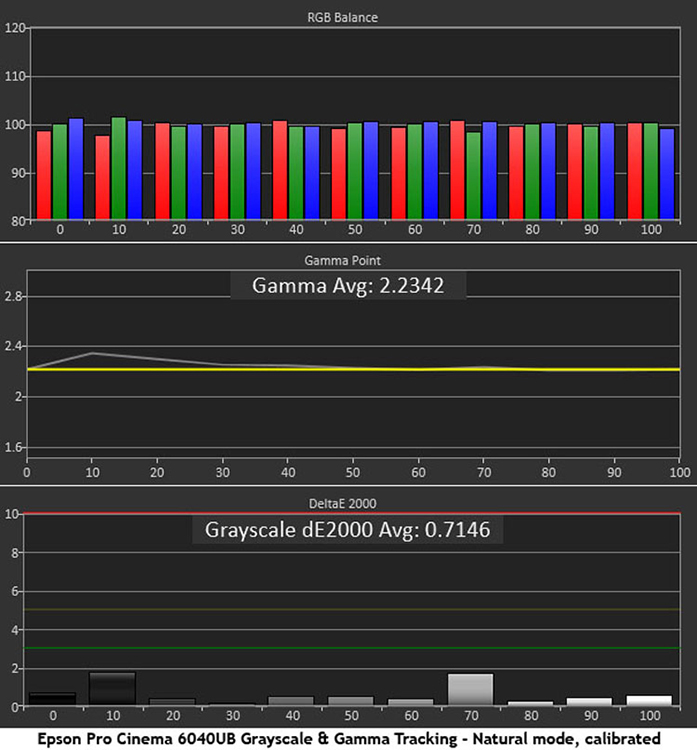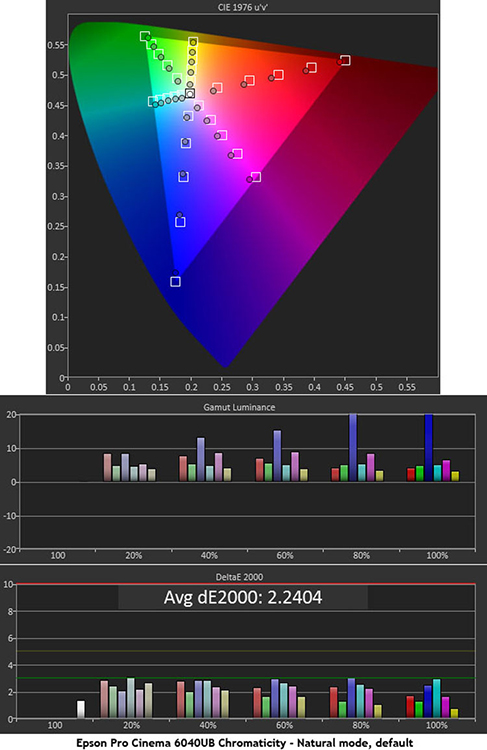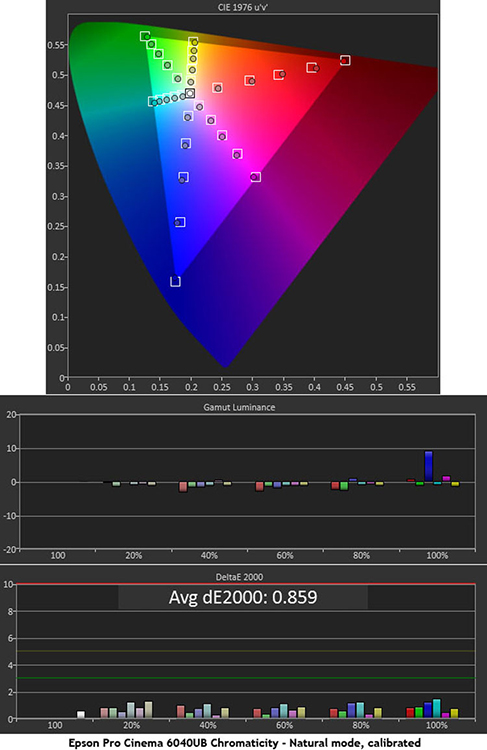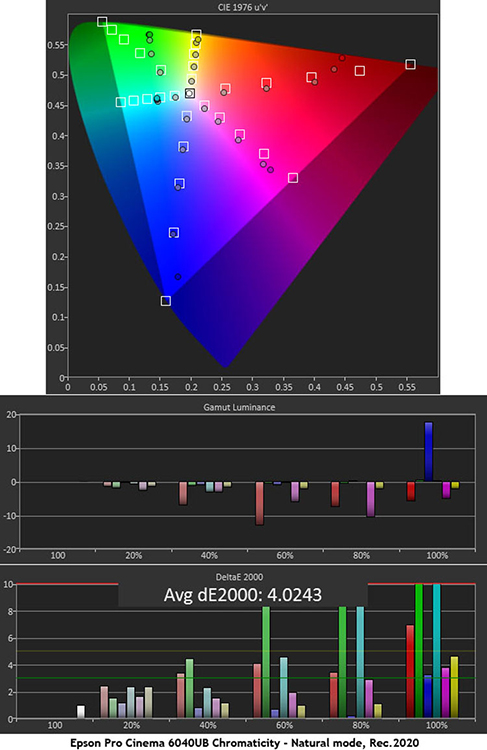Projectors are a little behind that trend but today I’m checking out the latest Pro Cinema models from Epson, the 6040UB. It features Ultra HD (4K) via pixel-shift, HDR-support and HDMI 2.0/HDCP 2.2 plus an all-new motorized lens. The best part is it comes wrapped in a relatively compact chassis and costs less than $4000.

Epson Pro Cinema 6040UB LCD Projector
- Ultra HD (4K) support via pixel-shift
- HDMI 2.0 w/HDCP 2.2
- DCI-P3 and Rec.2020 colorspace options
- 3D support
- HDR-compatible
- High contrast & lots of light output
- Motorized lens with position memories
In my career as a writer and video calibrator, I’ve been fortunate to be able to watch the evolution of new display technologies from a front-row seat. My association with Epson projectors goes back almost to their first 1080p models and during that time, I’ve seen them tweak and massage their 3LCD design into something that equals, and sometimes surpasses the best DLP and LCoS displays. And throughout that time, they’ve managed to undercut the competition’s price by a significant amount.
Light engine:
3LCD, Poly-silicon TFT Active Matrix, .74”-wide panel
Native aspect ratio:
16:9
Native resolution:
1920 x 1080
3D:
Yes, frame-sequential, top/bottom, side-by-side
HDR format:
HDR10
Colorspaces:
Rec.709-100%, DCI-P3-100%, Rec.2020-71.1%
Throw ratio:
1.36-2.84:1
Image size:
50-300”
Lens shift:
+-96.3% vertical, +-47.1 horizontal
Light output (mfr):
2500 lumens (white & color)
Inputs:
1 x HDMI 2.0 (HDCP 2.2) 1 x HDMI 1.4, 1 x VGA
Control:
1 x RS-232, 1 x 12v trigger out, 1 x RJ-45
Lamp power:
250w
Rated lamp life:
5000hrs Eco, 4000hrs Medium, 3500hrs High
Dimensions:
7.6″ H x 20.5″ W x 17.7″ D
Weight:
24.3lbs
Warranty:
3 years
MSRP:
$3999
Company:
SECRETS Tags:
Epson, Epson Pro Cinema 6040UB, 3LCD, LCD Projector, Projector Reviews, Projector Reviews 2016
A few weeks ago, I attended a press conference where Epson introduced its latest Pro Cinema line. At the top of the range is the 6040UB which is my focus today. Unlike the subtle improvements I saw in the past, this new projector adds three significant features that constitute a giant leap in the price/performance equation – 4K Enhancement, HDR and a motorized lens with position memories.
4K Enhancement is Epson’s pixel-shift technology that simulates Ultra HD resolution using 1920×1080 imaging chips. I first saw it in their flagship LS10000. HDR is all-new however. No previous display from Epson has this capability. It’s the thing I’m most-anxious to check out since it’s so unusual in the projector realm. The motorized lens is also welcome and surprising at this price point. While it’s something I’ve wished for in past Epson models, I never expected it to be included in something that costs less than $4000. Will the 6040UB’s performance match its impressive spec sheet? Let’s take a look.
It seems that every new generation of Epson’s 3LCD projectors ups the performance ante over its predecessors. The 6040UB seems to have made a larger-than-normal leap in this regard. The light engine is still based on a three-chip LCD design. The chips are .74 inches across and reflect directly back into the light path. Unlike LCoS where light passes through the chip twice, the LCDs simply act like colored mirrors which means higher peak brightness. The 6040UB can pump out over 130fL in its brightest mode from a 250-watt lamp. In Eco mode, it’s rated for 5000 hours between bulb changes. The projector’s fan is nearly silent in this mode.
The iris design is all new as well. The auto-iris that Epson is famous for is still here but a second shutter has been added that can be set to fixed positions. This is something I have long wished for since it enables higher contrast when you close it down at high lamp settings.

On the left is the auto-iris which uses a wing configuration. It’s less complex than before and enables faster and more-precise operation. On the right is a traditional leaf iris that can be set to any one of 20 positions. Even fully closed you’ll get plenty of output (30fL on Eco) and native contrast gets correspondingly higher. Between this and the three bulb power settings, it’s easy to tailor the 6040UB for any space.
Like the LS10000, the 6040UB supports Ultra HD viewing via pixel-shift. While it’s not a replacement for native Ultra HD imaging chips, it does a decent job at increasing sharpness and most importantly, it makes the pixel gap completely invisible even when you get right up to the screen. The overall effect is one of precise detail and smoothness.
In a nutshell, it works by passing light through a computer-controlled refractor. The refractor cycles at the native signal rate while the imaging chips refresh at double that. Persistence of vision stitches the two shifted images together to produce a single picture that appears to have higher resolution. The 6040UB can accept Ultra HD signals (either 3840×2160 or 4096×2160) at up to 60Hz through its HDMI 2.0 input.

The chassis looks nothing like any previous Epson projectors and is a bit larger as well. Overall weight is just over 24 pounds so your ceiling mount should have a little extra beef. The lens is center-mounted and fully motorized with generous shift (96.3% vertical, 47.1% horizontal), zoom and focus controls. They are controlled by a lens button on the remote that makes setup a snap. One tip: turn off the 4K Enhancement before setting focus. It’s a lot easier to accomplish when you can see the pixel gaps! The lens features up to 10 position memories so you can zoom out the black bars in Cinemascope movies then return to a 16:9 aspect ratio with a single button-press. When powered down, the lens is protected from dust by a sliding door which is also motorized.
Ventilation is generous yet fan noise is super-low, especially in the Eco bulb mode. There are basic menu and lens controls on a small side panel so you can install the 6040UB without the remote if necessary. Underneath are six mounting bracket holes plus extra threaded inserts for an anamorphic lens sled and two adjustable front feet for leveling.
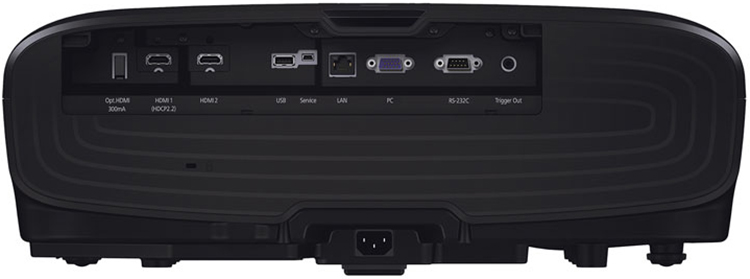
Around back are two HDMI ports, the first of which is version 2.0 with HDCP 2.2. If your source component is Ultra HD and/or HDR compatible, connect it to HDMI 1. HDMI 2 is version 1.4 which will accept Ultra HD signals at 30Hz and 3D content. If you have an analog source, use the VGA input. Component video connections can be made using a breakout cable. Control is handled with an RS-232 input and a 12-volt trigger output.
The remote is Epson’s traditional large wand with a soft white backlight. It provides one-button access to inputs as well as many projector functions. In the center is OSD navigation. If you have HDMI-CEC devices, there are transport keys provided. At the bottom are several buttons to toggle things like lens memories, color modes, PIP and a user-customizable key. The handset is very powerful and commands can be bounced off the screen or even a side wall to the projector’s front and rear mounted IR receivers. The one missing button is a control for the HDR modes. Why is this important? I’ll tell you below in the In Use section.
After connecting my signal generator and Oppo Blu-ray player via HDMI, it was time to explore the 6040UB’s vast menu system. As an experienced Epson user, the layout looked instantly familiar to me. There are just a few extra goodies added in.
Setting up the 6040UB is best split between color adjustments and image enhancements. The former can be accomplished in the Image menu. There are six picture modes that vary in brightness and color rendering. The best starting point for a Rec.709 calibration is Natural. Cinema and Bright Cinema pump up color a bit to help the projector compete with ambient light. You can also access the full DCI-P3 gamut by selecting Digital Cinema. Dynamic is where you’ll find the maximum output of over 130fL. And B&W Cinema is a great way to watch black-and-white movies with a vintage sepia tone.
To access the RGB controls, choose the Custom mode in the Color Temp sub-menu. Gains and Offsets are available to dial in the white point, though my sample only required minimal adjustment as you’ll see below in the benchmark tests.
Frame Interpolation has three levels plus off to add smoothness to moving images. Level one isn’t too bad for sports but it does add the soap-opera effect to movies and TV shows.
Image Enhancement contains options for 4K Enhancement plus various detail and sharpness settings. They can be a bit daunting and overuse can cause excessive edge enhancement and other artifacts. The best way to experiment is with an option called Image Preset Modes. There are five of these and they add in their tweaks progressively. I found the best setting to be number one. It added a little extra detail and punch without causing any problems.
In the Advanced sub-menu you’ll find five gamma presets plus a curve editor. You also get a color management system with hue, saturation and luminance sliders for all six colors. Here also is Epson’s Super White option. Leaving it off provides the greatest dynamic range but it clips information above white level 235. You’ll get better contrast this way so I chose to leave it alone. There is a lens iris control with 20 steps to further tweak light output. Closing it down increases contrast and even at its smallest aperture, I saw over 30fL peak after calibration. There are three bulb power settings here of which Eco provides the longest lamp life, quietest fan and lowest power consumption. Finally, you can set the auto iris to off, normal or high speed if you want to increase contrast even further.
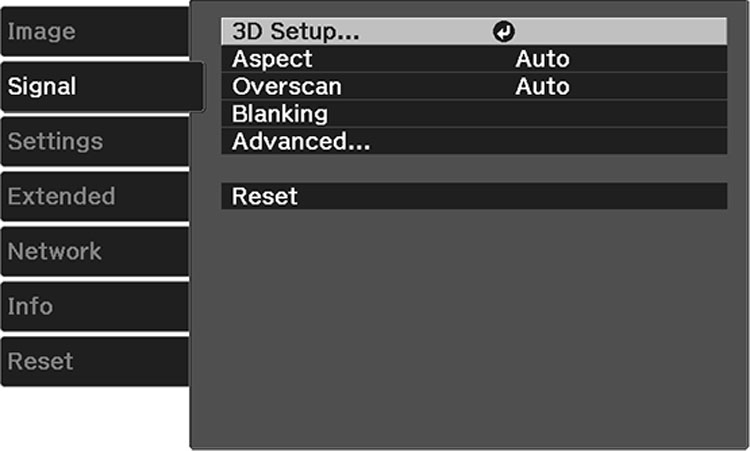
You’re unlikely to need any changes to the 3D setup if you’re showing Blu-ray content. The Aspect menu has options for anamorphic lenses and you can set overscan too. In the Advanced menu are HDMI video range and color space settings. Dynamic Range is intended for HDR signals and has four modes available. These are important because each 4K Blu-ray defaults to a particular mode. When I watched Creed, I found it much too dark until I changed it from HDR Mode 1 to Mode 0. This is a function which really should be added to the remote.
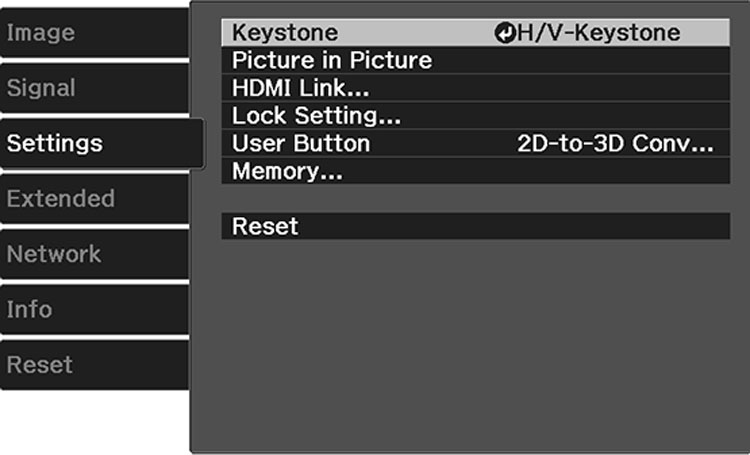
The most notable feature in the Settings menu is the Memory section. You can save all image and signal options as well as the lens position. This makes changing image shapes a breeze. If you have a 2.35:1 screen, you can simply zoom the black bars off-screen then return the picture to a 16:9 format with a single key-press. Testing this with crosshatch patterns showed the motors to be very precise. Not only did they nail the lens position perfectly, the change took only a few seconds.
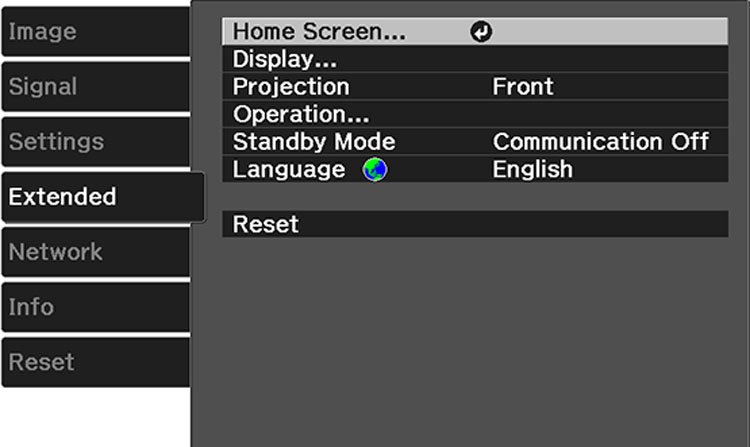
The remaining setup features are found in the Extended menu. Of note here is Display which has a panel alignment and color uniformity adjustment. This should be done carefully and with instruments if possible. My sample had already been tweaked so I left these options alone.
As I said earlier, the 6040UB has many image options. After completing a color calibration, I thought it best to use actual content to explore the 4K Enhancement and other settings.
Pixel-shift is an evolving technology. The 6040UB is the second projector from Epson to employ it and on first glance, it seems noticeably improved from what I saw in the LS10000 laser model. Not only does it shrink the visible pixel gap to almost nothing, it enhances detail in a natural way. Many image enhancement techniques can make the picture look artificial but this is the first time I’ve seen something that truly looks like native Ultra HD.
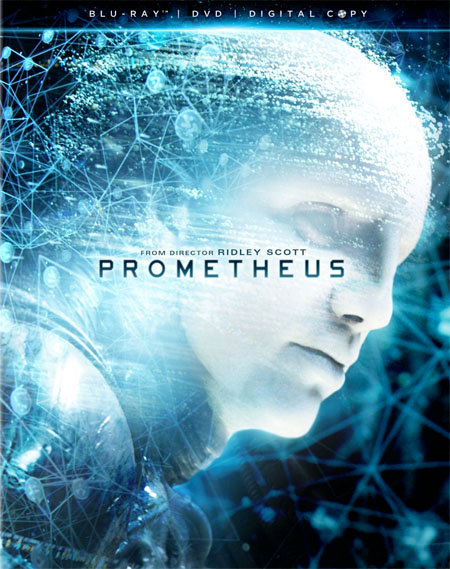
To check out the projector’s contrast chops, I started with Prometheus. There are many sequences early in the film that take place in a deep cavern. Aside from the character’s environmental suit lamps, there are no sources of illumination, only reflections. I quickly found there was no need for the auto-iris. With the bulb on Eco and the fixed iris at its smallest aperture, I still had around 30fL peak and over 6000:1 contrast; more than enough to pop out subtle shadow details. Thanks to its nearly-perfect gamma tracking, the 6040UB easily matched performance with my reference Anthem LTX-500 in this movie.
Color was also natural and smoothly-rendered. Fleshtones had just the right amount of red and orange and you could easily discern subtle differences between the actors’ skin tones. I experimented with the various enhancement settings and found the best result in Image Preset 1. I couldn’t improve upon this choice by manipulating the individual sliders. Higher presets resulted in an over-processed appearance with visible edge enhancement.
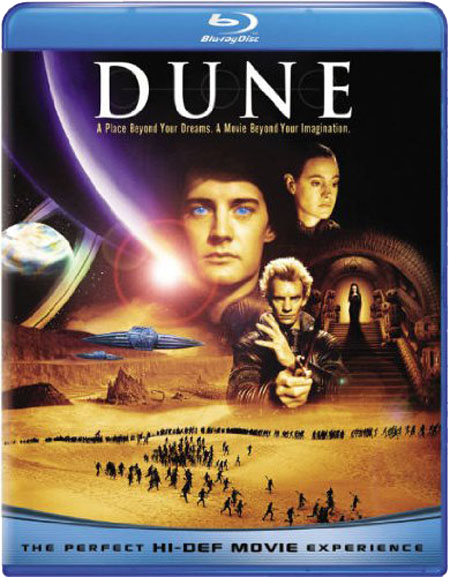
Next I watched Dune, a sci-fi golden oldie from 1984. With 4K Enhancement turned on, it looked better than ever. The Blu-ray is a decent transfer but it is not free of flaws. Epson’s noise reduction feature did a good job of reducing crawly-looking grain and kept fine details clear without additional artifacts. The warm tones of Arakkis and the Emperor’s palace interior never strayed from their natural look. The crude special effects looked a bit too honest at times when I could clearly see composite shots and matte paintings, but that is a compliment, and speaks to the neutrality of this display. What goes in, comes out unaltered. Here again, the 6040UB’s excellent native contrast shone through and I never felt a need to engage the auto-iris.
The two biggest reasons for 3D’s lack of mainstream popularity are image quality and those darn glasses. The former problem is principally caused by a lack of light output. Active glasses can cut brightness by as much as 80 percent leaving the image dull and lifeless. Most projectors and HDTVs suffer from this problem. While a 3D movie is watchable at 5fL peak, it isn’t really that enjoyable. The 6040UB however can pump out over 12fL in its 3D Cinema mode. That isn’t too far off the SMPTE spec of 16fL for 2D. With that in mind, I was excited to watch some quality content.
![]()
I’ll never forget seeing Avatar in 3D IMAX for the first time, and that’s mainly because no 3D movie made since has even come close to its quality. In a home theater setting there are very few displays that can truly do it justice but the 6040UB is one that can. Say what you want about the film’s plot or dialog, watching it on a projector like this is a real treat. I experimented a bit with the Frame Interpolation and while it pretty much eliminated motion blur on its lowest setting, it also flattened the image.
The 3D effect is far better when it’s left off. 4K Enhancement is not available in 3D mode but the Image Presets are. Again, number 1 was the best choice. It sharpened the picture without making it look artificial. Needless to say, color and contrast were beyond reproach. If 3D could always look like this, it would be in a lot more homes.
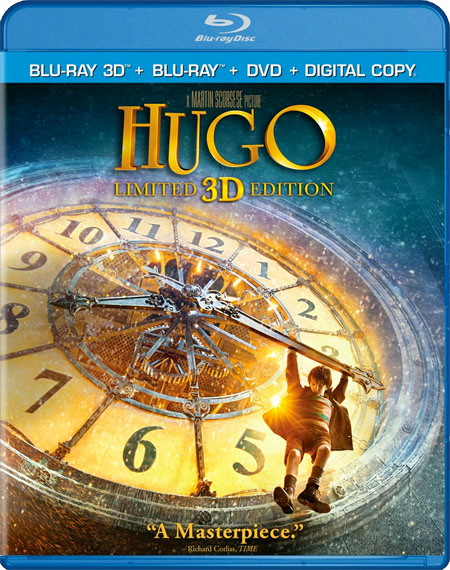
Hugo presents quite a bit of hard-to-render shadow detail during the sequences in the clock tower. Very little light is present and backgrounds are of the deepest black. Thanks to the 6040UB’s prodigious output, I saw every nuance clearly. The impression of depth is tremendous mainly thanks to the projector’s excellent contrast.
Color is also just as accurate as in 2D mode thanks to an independently-adjustable picture mode. I was able to create a separate calibration for 3D using the glasses to achieve perfect accuracy. Lamp and iris settings are part of that preset so you won’t have to make additional changes when switching between 2D and 3D content.
During my time with the 6040UB, Epson kindly provided me with one of Philips’ brand-new Ultra HD Blu-ray players. Look for a full review soon here at Secrets. The player ships with a copy of Creed and I added JJ Abrams’ Star Trek and The Martian to my library. All three transfers are 3840×2160 resolution with HDR and Rec.2020 color. And if you’re wondering about HDMI cables, I used my trusty 10-foot Monoprice RedMere ultra-slim without issue.
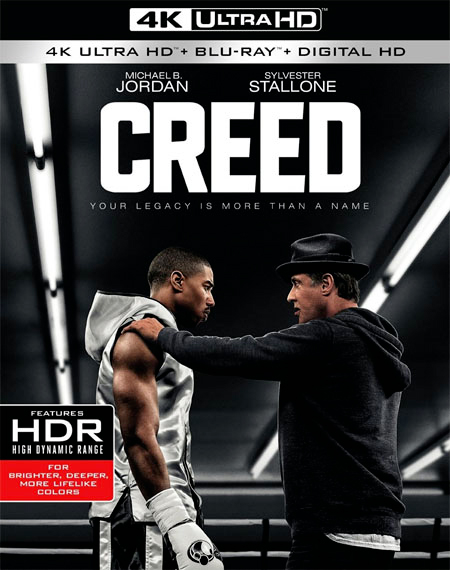
I started with Creed and immediately noticed that it looked very dark. A quick trip to the signal menu, advanced section, reveals multiple dynamic range settings. You can watch content in Standard or in one of four High Dynamic Range modes. The disc’s meta-data determines which mode to set if you leave the option on Auto. Creed defaults to Mode 1. By selecting Mode 0 and opening the manual iris up all the way, I was able to see the full potential of this new technology. Image depth is far greater and detail is enhanced not only by HDR but by the extra resolution. Even though the 6040 isn’t a native 4K display, it does a superb imitation.

Moving on to The Martian, I got an even better taste of what this projector can do. The wider color gamut is definitely visible here with reds and oranges that just aren’t possible on a Rec.709-only display. The plains of Mars stretched out in front of me and I almost felt as though I needed a spacesuit. Detail in clothing, machinery and control panels was amazing. Switching back and forth between HDR and SDR showed a huge difference. The SDR image looks flat and washed-out by comparison. This disc defaults to HDR Mode 0 which looks far better to me than Mode 1.
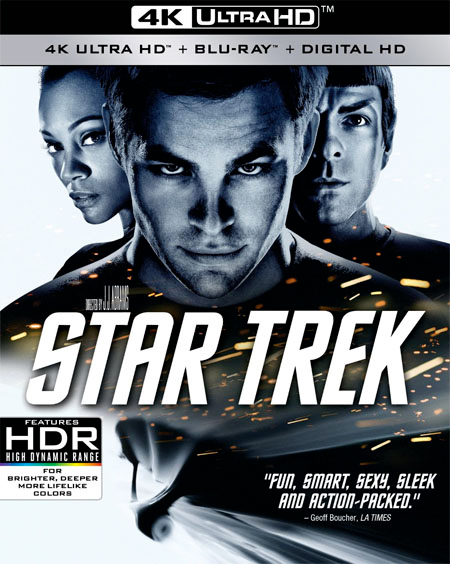
Finally I watched JJ Abrams’ Star Trek which looks great in any format. It also defaults to HDR Mode 0 which adds plenty of extra depth and dimension without making dark content too murky. The bar fight scene was full of detail and bright color despite the subdued lighting. Space looked extra vast as stars shone brightly against a rich black backdrop.
Watching HDR content exposed one minor flaw in the 6040UB’s remote. The HDR modes should be accessible without opening the on-screen menu. Different Blu-rays will default to different modes and some may be too dark, like Creed. Leaving the setting on Auto is not the best option. And I couldn’t program that function to the User key.
All grayscale, gamma and chroma readings are taken from the projector’s lens using an X-Rite i1Pro with the diffuser attachment. Contrast tests are performed with a Spectracal C6 tri-stimulus meter positioned at the lens axis and measuring from the screen at a 12-foot throw distance. This method provides an accurate picture of the contrast performance seen in a typical viewing environment.
My reference screen is a Stewart Filmscreen LuminEsse fixed-frame system configured with StudioTek 130 material. It has a gain of 1.3 and is 92 inches diagonal in size. Patterns come from an Accupel DVG-5000 signal generator and the whole procedure is controlled by CalMAN version 5. Color standards are Rec.709 and Rec.2020, both with a white point of 6500 Kelvins. Gamma is compared to the BT.1886 spec or the 2.2 power function where appropriate.
I would expect anyone buying a projector at this price point to at least consider a professional calibration. When one spends $3000 and up on a display, the $300 it costs to have it tweaked to perfection seems like a worthwhile investment. That being said, the 6040UB requires very little adjustment to achieve fantastic accuracy and a stunning picture.
The projector comes set to its Bright Cinema mode but I found Natural to be a better starting point for calibration. If you don’t plan to make further adjustments, this is a great mode with excellent out-of-box accuracy. Set the bulb to Eco and close the manual iris down to -20 to enjoy around 30fL peak and nearly perfect color.
I would almost say one could leave the projector unadjusted and enjoy many years of wonderful imagery. But when there is the potential for improvement, one should always avail themselves. The only thing that really needs fixing here is the gamma. It runs a little too light which reduces perceived contrast and image depth. Simply change the preset to -1 for optimal gamma tracking.
Of course I adjusted the two-point white balance controls as well. The gains (high range) have very fine resolution resulting in a high degree of precision. The offset (low range) sliders are coarser but they didn’t prevent me from achieving excellent results. I can’t explain the slight bumps at 10 and 70 percent but neither error is even remotely visible. This is excellent performance.
The 6040UB has a large native color gamut that fully covers the DCI-P3 spec. In the Rec.709 realm, the projector hits the marks almost perfectly out of the box. There is a slight magenta hue error due to white point inaccuracy. And saturation tracking is a little under thanks to the light gamma curve.
The 6040UB has a large native color gamut that fully covers the DCI-P3 spec. In the Rec.709 realm, the projector hits the marks almost perfectly out of the box. There is a slight magenta hue error due to white point inaccuracy. And saturation tracking is a little under thanks to the light gamma curve.
After adjusting the gamma preset and RGB sliders, color is now what one would expect from a professional-grade mastering display. The level of accuracy is rarely seen in any consumer product. Remember that the .859dE error level is the average of 36 measurements. It can’t get much closer to perfect than this.
Part of the Ultra HD specification is the greatly-expanded Rec.2020 color gamut. Currently, there are no consumer displays that can render this colorspace. That hasn’t stopped the UHD Blu-ray format from adding in the extra color and most 4K HDTVs and projectors have an appropriate preset available. But can they actually meet the spec?
One look at the CIE chart shows that the 6040UB won’t quite reach the outer edge of the Rec.2020 triangle (coverage is 71.1-percent) but look closely at the inner saturation levels. Epson has employed some clever engineering to approximate the gamut without adding the expense of new imaging chips and filters. Up to around 80 percent, the color points are pretty close to their targets. When the light engine runs out of color, it alters the hue in an attempt to increase perceived saturation.
The best part is Epson has not bumped up luminance levels to try and fake the extra color. That would simply result in a cartoonish look. Real-world content doesn’t often hit the color saturation peaks but stays mostly in the mid-tones which are pretty accurate here. The end result is a reasonable approximation of Rec.2020 which does a nice job of showing Ultra HD Blu-rays in a natural form without blown-out color or clipping of detail.
If you want to get closer to the fully-extended gamut, look no further than Epson’s own LS10000 laser display. In my review of that projector, I noted that it completely meets the Adobe RGB spec which falls between DCI-P3 and Rec.2020.
It wasn’t long ago that projectors able to exceed 20 footLamberts peak were considered bright. Today 50fL has become almost passé. The 6040UB is a home theater model but that doesn’t mean it can’t pump out some serious lumens.
After calibration in the Natural mode with the bulb on Medium, I measured a peak white level of 82.5633fL, a black level of .0153fL and a native contrast ratio of 5387.2:1. This is with the fixed iris fully open and the auto-iris turned off.
Reducing the bulb level to Eco adds 1000 hours to its service life and doesn’t reduce light output too much. Peak white is then 76.6408fL, black is .014fL and the contrast ratio is 5484.3:1.
The cool thing about a fixed iris and a bright bulb is that you can stretch a projector’s native contrast by closing the iris down. To this end, I left the bulb on Eco but set the iris on -20, its smallest aperture. The white level is then 30.1855fL, the black level is .0045fL and the contrast ratio increases to 6660.3:1. This is where I did my viewing tests.
If you need a lot of light, select the 6040UB’s Dynamic mode. With the bulb on High the peak white is 136.641fL, the black level is .0189fL and the contrast ratio is 7213.3:1.
The auto iris can add quite a bit of contrast but you’ll sometimes see it operating when content shifts brightness quickly. It also reduces peak white somewhat but pays that back with super-low black levels. With the iris on High Speed, the max white is 57.267fL, the black level is .0017 and the contrast ratio is an impressive 33,595.7:1.
Finally, in 3D mode I recorded some superb numbers. In the 3D Cinema mode with the bulb on High I measured 12.7757fL peak, .0028fL black and 4605.5:1 contrast.

The 6040UB had no trouble with any resolution tests in either RGB or 4:4:4 signal modes. There was a slight roll-off of the one-pixel burst when viewing the 4:2:2 format. One might encounter this when using an old DVD player or when viewing low-quality streamed content. Set your source component for RGB or 4:4:4 for best results. The projector failed both the video and film mode de-interlacing tests. 2:2 is not surprising but 3:2 is. Most Blu-ray players will correctly process 3:2 pulldown when showing DVDs so this isn’t a big deal.
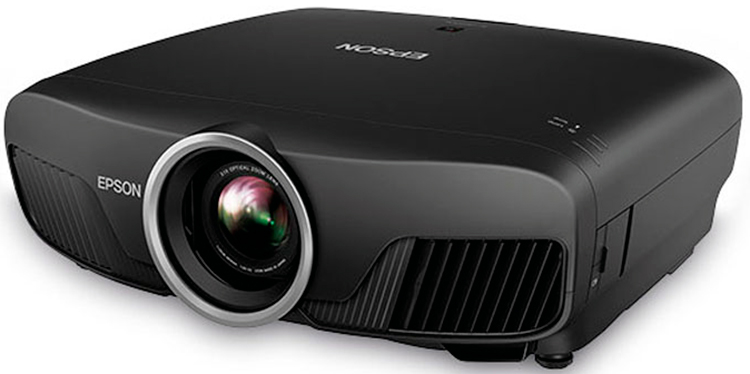
THE EPSON PRO CINEMA 6040UB offers HDR and Ultra HD Capability for Less than the Cost of a Decent Flat-panel TV. It Truly is a Flagship Display at a Budget Price.
- 4K Enhancement truly improves image quality
- HDR adds depth and can be tuned to user preference
- Superb motorized lens with memories
- Excellent out-of-box color accuracy
- Excellent contrast
- Killer 3D
- Terrific value
- HDR controls on the remote
- Dolby Vision support
HDR and Ultra HD are relatively new technologies; display manufacturers and content providers are both still trying to find the best uses for it. Given my 4K Blu-ray experience so far, I’d have to say it will do more for some films than others. But one thing is sure, the Epson Pro Cinema 6040UB can handle pretty much anything you care to play on it. I have rarely found a more capable or a better-looking projector.
By this point you’re undoubtedly wondering why anyone would buy Epson’s LS10000 laser projector when the 6040UB offers the same 4K Enhancement plus HDR which the former does not have. If you’ve read our CEDIA Expo reports, you already know the answer. The LS10500 has been announced which adds HDR to its already impressive list of features. Look for a full review soon here at Secrets.
But if your budget can’t quite handle an $8000 display, the 6040UB will not make you feel as if you’ve settled. It offers everything found in high-end models for far less money than the competition. I’ve extolled the value of Epson’s Home Cinema and Pro Cinema lines for several years. Each new model is better than the last, but only incrementally. This time however, a real leap has been made.
There is truly nothing lacking here and I would not hesitate to recommend the Pro Cinema 6040UB. My only question is – how can Epson possibly top it?


